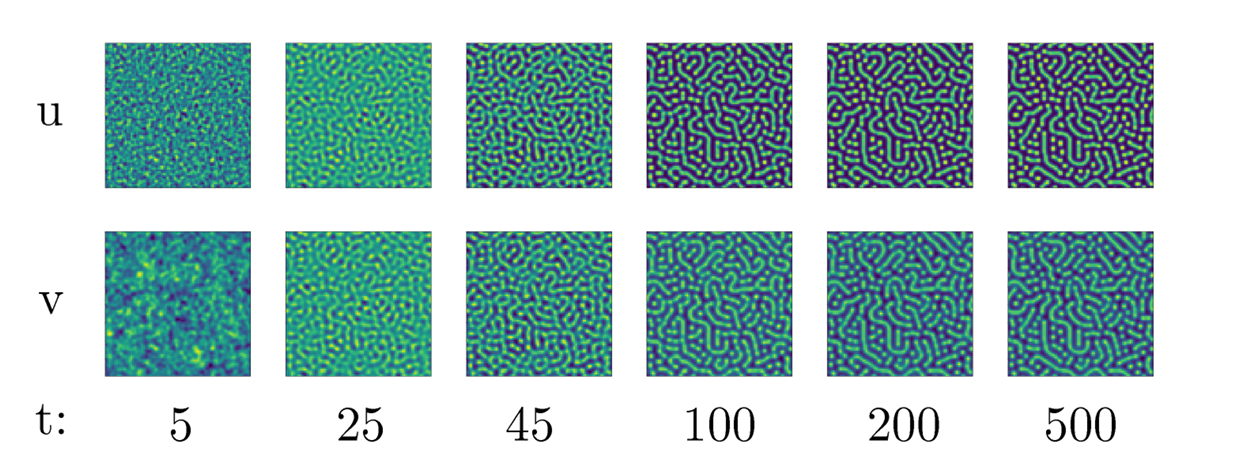Description
For my final project, I was looking for something where I could computationally make patterns or interesting shapes and Turing’s model grabbed my attention. Turing’s model for generating patterns creates patterns that make up a lot of patterns in nature, fingerprints, leopard spots, zebra stripes, etc. I thought that creating a collection of objects using the patterns generated with Turning’s model would be interesting. Some images created using the model are shown below that come from the included paper “Turing’s model for pattern formation” in the related work section.
I also want to create something physical that is not just printed plastics but I am considering if the cost of molding my prints to create candles is within a budget that I am comfortable spending or if I will stick to a set of 3D printed forms as the final pieces.
I wish to create a set of at least three forms (whether cast into candles or not) that showcase a variety of different patterns that can be generated using Turing’s model in a 3D form.
Timeline
Week 13 (November 11): Set up the required code to be able to generate these patterns with variable inputs and find a collection of those that are interesting or cool to look at.
Week 14 (November 18): Iterate different methods of printing these generated patterns, and decide by now or hopefully earlier if I want to create candles and buy the supplies for that.
Week 15 (November 25): Finalize the collection of objects with these generated patterns, and start the molding and casting process of the 3D printed forms for candles if I conclude this is an option that I am comfortable with from the previous deadline.
After this the final objects should be done and ready for the end of the semester.
Related Work
The first PDF is an overview of Turing’s model for pattern formation and showcases images that can be generated using the model.
There is also this artist, Jonathan McCabe, who was able to create a number of generative artworks utilizing Turing’s model, his website is available here: http://www.jonathanmccabe.com/
Also, a PDF of a paper that he wrote about his process is given below.
Hello Luka,
I love your pattern idea and I would really love to see these computational patterns cast onto candles if it’s doable. I have seen many projects that I think would make a good side business and I think this one is no different. Even experimenting with applying these patterns to many different types of objects could be interesting. Overall, I think this is a very cool project and I am excited to see how the final prints turn out!
Thank you! I enjoy making things that have more functional uses, even though I usually just use candles as decoration and never really light them. I do intend to add these patterns to some varying base forms to make it more interesting and hopefully, that doesn’t impede any potential plans for casting the prints and making candles.
Hi Luka,
Your proposal is interesting, and sounds like it could have an entire section of the course dedicated to it. There’s the aspect of computational fabrication, and theory associated with it that makes it fascinating. Alan Turing is a CS legend and I never knew he had works associated with something artistic like this. Also, I think you should definitely experiment with turning your patterns into a candle. Good luck!
Thank you for the luck! Honestly, I was mostly looking for ideas and stumbled on patterns that led me in this direction. I was surprised that Turing was what I stumbled into since I was more familiar with some of the other things he’s famous for. It took me a while to find something that was created deliberately and labeled as art and I think it’s cool just how complex the patterns can get with artistic purpose.
Hi Luka,
Using Turing patterns is a very neat idea! The textures they create would lend themselves to many different kinds of prints I would think. The example patterns you include in your post remind me of some woodcut prints that I’ve seen before.
Thank you! I agree I think I have a lot of options and potential for my base objects to incorporate the patterns onto, and I can have a lot of fun with just that part of the designing.